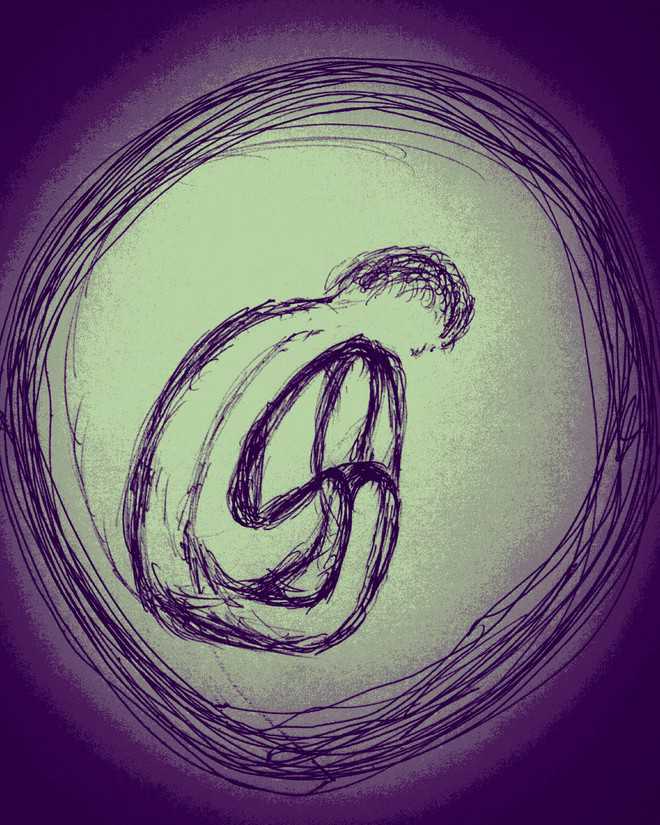
Illustration by the writer
Chanakya Grover
What if I asked you to choose between the colour blue and pink? Would it be presumptuous of me to predict that a vast majority of men would pick blue? I think not. What makes me so sure of myself? Take a look around and tell me if most things, initiatives, and organisations you see nowadays that are associated with women don’t have a bit of pink in them. Or, better still, why don’t you just gift the man in your life a pink phone cover and see how he reacts.
Now, what’s wrong with associating pink with women, you ask, especially, when it makes it easy to communicate a women-centric idea effectively? Absolutely nothing, I say. It’s just a colour; just like any; and if it serves a good purpose, use it. We use green to denote vegetarian, red for stopping or danger, and yellow for school buses and taxis because it pops out and our brains can pick it out easily among other colours. However, by using pink everywhere and in everything even remotely associated with women, we are creating a powerful colour divide between genders and actively reinforcing a negative gender stereotype.
Why should a gender be identified with one specific colour? Why should men be laughed at or considered gay when they use something pink? Remarks such as ‘That colour is too girlie for you’ or ‘I didn’t take you for a pink guy’ are thrown casually at men, by parents, friends, partners, relatives and acquaintances alike. Even infants and young boys are not spared. And what makes it worse is that such remarks often come from literate people who seem the most progressive, giving us a glimpse of how deep-rooted such prejudices are in some cultures.
I say ‘cultures’ because the environment we grow up and live in on a daily basis matters, more than we would like to believe. Take for instance, our metros and cities where commerce, advertisements, malls, television and movies play a dominant part and where, right from the colour of the baby rooms, clothes, bags, shoes and toys to adult toothbrushes, razors, gadgets and even parking spaces, the pink–blue colour divide is all too apparent. While such a divide plays great for the bottom line of the organisations selling such products, children who are born and brought up in such a space grow up with a skewed gender perception.
And it doesn’t help either when a good movie like Zindagi Na Milega Dobara shows its male and female characters making fun of a pink phone that Farhan Akhtar gifts Hrithik Roshan in the movie. “Main trader hun, koi Japanese school girl nahi (I’m a trader, not a Japanese school girl),” says a visibly embarrassed Hrithik Roshan in one of the scenes where he looks at the phone for the first time. Another recent movie that made headlines for all the right reasons including its content is Pink. It is a story of three women, which stresses on the importance of a woman’s consent and shines light on the unfair treatment meted out to women in our society. As important as these issues are and as hard-hitting as this movie was, naming it Pink only cemented the colour stereotype for all and sundry.
Even when we look at some of the organisations that work in the area of gender awareness, empowerment, and equality, we see that a few of them, by virtue of their names or logos, leave much to be desired; because they too, it seems, fail to get their basics right. Take Pinkathon for instance. Founded in 2012, it is India’s biggest women’s running event and it was created with the idea of getting more women to adopt a fitter lifestyle for themselves and their families, and to make people aware of breast cancer and other issues that put women’s lives at risk. It may have succeeded in its goal but it also succeeded in widening the gender divide by virtue of its name and logo.
Be that as it may, all is not lost. There are still places like Rajasthan where men wear pink-coloured turbans and attires with natural ease, and where a whole city — which also happens to be Rajasthan’s capital — is called the Pink City. There are still movies like PK which question the whole concept of wearing different colours on different occasions and which shows its lead actor Aamir Khan dancing with Sanjay Dutt in a pink kurta and turban along with many others, thereby, de-genderising colour for the masses.
But we just cannot expect organisations to resolve this issue. All of us, at an individual level, need to analyse our colour associations and make a conscious effort to decouple them from gender, both in our thoughts and actions.
So, the next time you like something in pink, don’t forego it just because the world may think of you as less of a man or more of a woman.



























